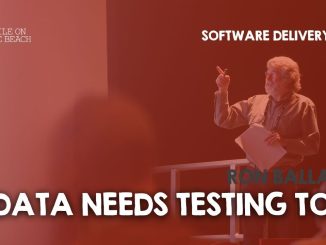Software Testing Videos and Tutorials: Load Testing, Unit Testing, Functional Testing, Performance Testing, Agile Testing, DevOps
To date, web applications have been the focus of digital accessibility tooling. Attention is now pivoting to mobile apps that are usually tested with Appium. So how do we test mobile apps for accessibility? Many organizations test their apps with assistive technologies.
Application developers typically test their code, often with large suites of automated tests, before each new release. But, when the application is running live, it will be receiving data from multiple sources, over which we may have little control, and that data will sometimes be unexpected and invalid in some way.
This is an introduction to Healenium, an open source tool with proven results to enhance the stability and maintainability of Appium tests. You will learn about its functionality, explore its integration with Appium, and demonstrate its practical application through a live code demo.
ASP.NET Core has been designed from the ground up with testability in mind. XUnit is the open source testing framework the ASP.NET team uses to test their own code.
Writing unit tests is pretty much standard practice these days. Otherwise, how would you make sure that your code does what you expect? Yet, some software is mission-critical and merely testing a few examples – or even randomized testing – is not enough.
End-to-end (E2E) testing is one of the more common approaches to testing software, but it is complex, fragile expensive and low quality. As soon as we accept that the best way to test our system is to deploy it all together, with everything else that it interacts with and then try broad-brush interactions with the whole lot, we have lost control.
Selenium WebDriver is a great open source tool, but it is not software a testing library. It is a browser manipulation tool. Still, a good deal of software QA projects are built on pure Selenium. Selenide is a testing library based on Selenium for making stable and readable tests.








